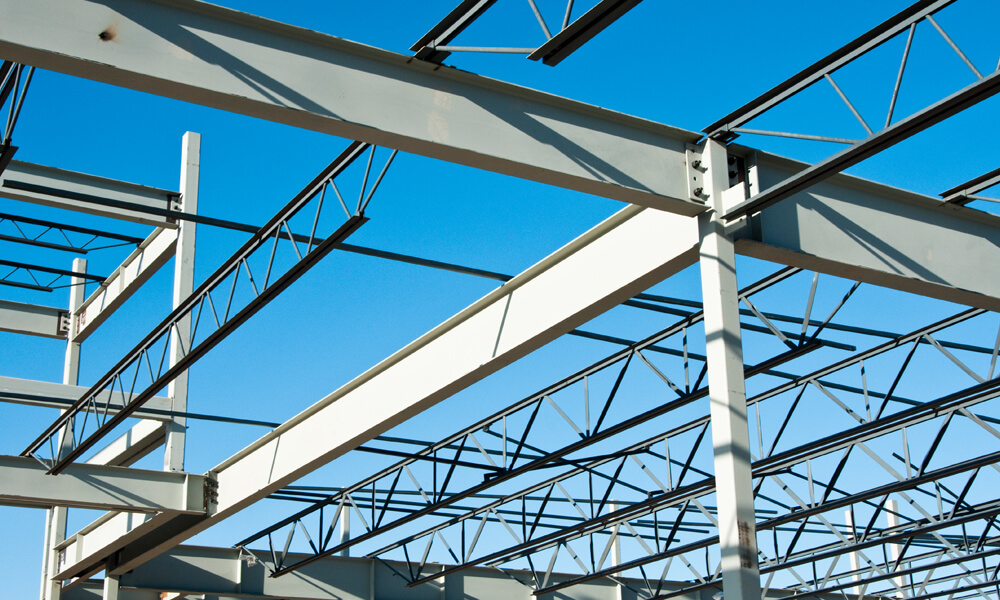In the world of construction, engineers and architects have to make key decisions about the structural elements that provide strength and stability to buildings. Two popular choices for supporting loads in floors and roofs are steel joists and steel beams. Although both materials are integral to modern construction, steel joists often come out ahead in terms of preference, thanks to their versatility, cost-efficiency, and ease of installation. Here’s a closer look at why steel joists are the preferred option over steel beams in many applications.
1. Cost-Effectiveness
Steel joists are typically more economical than steel beams due to their design and manufacturing process. Joists are made from lighter, less dense materials than beams, meaning less steel is needed to produce them. This translates to lower raw material costs. Additionally, the open-web design of joists reduces the overall weight without sacrificing load-bearing capacity, leading to lower transportation and handling costs on-site.
Moreover, steel joists can span greater distances than solid beams for the same weight, which can reduce the overall number of structural elements needed. This means fewer joists, less material, and less installation time, all of which contribute to cost savings in the long run.
2. Efficient Load Distribution
Steel joists are specifically designed to distribute loads effectively across wide spans, making them ideal for buildings where wide-open spaces are essential, such as warehouses, commercial facilities, and gyms. The open-web design of a joist allows for even load distribution and greater structural efficiency, meaning joists can bear the same loads as beams while using less material. This efficient load-bearing capacity makes them highly adaptable for various construction needs, particularly for large, open floor plans.
3. Flexibility in Design and Installation
The lightweight, open-web design of steel joists provides greater flexibility in design. Joists allow for easy placement of HVAC systems, electrical conduits, and plumbing within the open spaces, which is not as feasible with solid steel beams. This flexibility is a significant advantage, as it allows engineers to plan for both structural support and building systems in a coordinated, integrated way.
Additionally, because steel joists are lighter, they can be more easily maneuvered into position, making installation faster and less labor-intensive. This adaptability makes steel joists a better choice for projects where construction speed and ease of installation are critical.
4. Enhanced Aesthetic Potential
Steel joists offer more aesthetic versatility than solid beams, which often require covering or additional finishing to achieve a refined appearance. Exposed steel joists have a contemporary, industrial look, making them an attractive option for designers who want to incorporate structural elements into the visual style of a building. For spaces where the ceiling structure is visible, such as in modern offices, restaurants, and industrial-style homes, the sleek, open-web design of steel joists can become a focal point.
5. Lighter Weight and Reduced Foundation Costs
Compared to steel beams, steel joists are significantly lighter, which can translate into substantial savings on foundation costs. When using steel beams, the extra weight requires a more robust foundation to support the structure, leading to higher construction costs. Since steel joists reduce the overall weight of the building, they minimize the need for heavy-duty foundations, which can lead to significant savings.
6. Adaptable to Different Spans and Loads
Steel joists are available in a variety of shapes and sizes to suit different structural needs, allowing for a high degree of customization. Joists can be tailored to fit a variety of spans and load requirements, making them suitable for everything from small residential projects to large commercial and industrial structures. With advancements in steel joist design, manufacturers can produce joists with longer spans and higher load capacities, allowing architects and engineers more freedom in planning and constructing a building.
7. Environmentally Friendly
Steel joists have a lower environmental impact than beams due to their efficient use of materials. The reduced material requirements mean that fewer raw resources are used in production. Additionally, steel is one of the most recyclable materials available, making it a sustainable choice in construction. Once a building reaches the end of its lifespan, the steel joists can be recycled and repurposed for new projects, aligning with sustainable building practices.
8. Conclusion
While both steel beams and joists have their place in construction, steel joists offer distinct advantages that make them preferable in many applications. Their cost-effectiveness, efficient load distribution, flexibility, and reduced weight make them an ideal choice for modern building projects that require both structural integrity and design versatility. As construction techniques evolve and the demand for efficient, sustainable solutions grows, steel joists will continue to be a valuable asset in the world of architecture and engineering.



